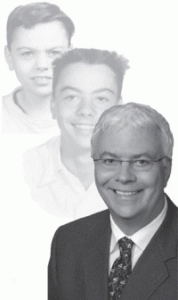Use it or Lose It: The Dynamic Brain
It seems that there is a mass sense of awaiting the magic bullet – the medication or the supplement – which we can take to make neurological disease go away. I hear so often how disappointed my audience is when I honestly say there is no magic potion available nor is there one that I can see on the horizon. We have come to expect medicine to offer a cure for Alzheimer’s or Parkinson’s disease just as it can offer antibiotics for certain infections or analgesics that make a migraine go away.
However, if we actually understand how the brain functions, there are treatments right under our nose. I recently read Norman Doidge’s article in the Wall Street Journal (February 7/8, 2015) “Brain, Heal Thyself” with great interest. He points out how our evolving metaphors of the brain, despite having immense heuristic value, have constrained our thinking about treatment of brain diseases.
The French philosopher Rene Descartes proposed an early model. He proposed the brain functioned as a machine. His model was further refined by the added proposition based on the brain’s electrical nature that the brain consists of circuits that have specific roles. Of course, this evolved into the current metaphors of the brain as a computer. These models limit our thinking as the focus on “hardware” and “software” that make the brain inflexible and mechanical. It is something to manipulate from the outside via a chemical or a surgery.
But the brain is anything but static. The brain is a fluid, dynamic organ that defines and constantly redefines itself from birth. The brain creates and refines its skills, microcircuitry, from experiences. It learns. It elaborates skills and parts it uses and it weakens those not needed or used. Consider the miracle of language. We learn language by experience without effort in our early years when all languages are possible. The brain is not fixed but rather it is flexible and evolving. It elaborates itself by use and wastes away by underuse.
Mr. Doidge discusses some interesting implications of this understanding for treating neurological disease. For example, Alzheimer’s disease can be understood as a progressive loss of the brain’s plasticity. It has diminishing returns of benefits from experience. As Alzheimer’s disease unfolds over decades and only becomes disabling at the end of its course, it is treated by lifestyle interventions like found in a recent epidemiological study. The results indicated that the “risk of dementia” is reduced by healthy eating, maintaining normal weight, limited alcohol, not smoking, walking at least the equivalent of 2 miles a day. These interventions appear to mitigate some of the decline attributed to normal or abnormal aging.
Consider also the frustrations of those with Parkinson/s disease that Doidge describes as the “tightening noose.” Fast walking helps motor function in Parkinson/s disease. But the rub is that this becomes increasingly difficult as the disease progresses so those afflicted back off on walking fast further adds to the disability by “learned nonuse.” Also, there is a disengagement of rhythmicity of motor execution in Parkinson/s disease. This may explain why walking on treadmill or dancing to music helps as these activities aid rhythms and help increase speed.
All of this is encouraging. We can treat neurologic disease as well as balance changes from aging by taking advantage of the brain’s natural placidity. We need to better understand these treatments, quit waiting for the magic bullet, buying unproven computer games, and take advantage of the brain’s natural ability to manage itself.




